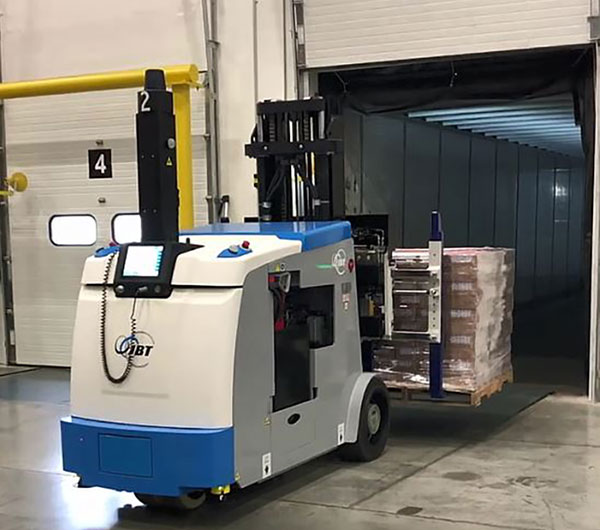



Designed for operation in loading docks, an automated trailer loading and unloading (ATL) AGV offers an effective and safe solution for trailer loading and unloading—without requiring truck modifications.
Available with standard single/double fork attachments, which can handle several load types and loading patterns, the ATL increases flexibility and productivity. Since the ATL has larger and softer tires than previous generations, along with tilting masts and dual rear drives, it enables easier travel inside trucks and over dock plates.
Using two forms of navigation—the adaptable, agile Natural Feature Navigation as its primary navigation and the Wall Following Navigation as its secondary navigation—the ATL ensures just-in-time delivery on a consistent basis.
MODEX 2022 - Booth B6626
Shipping and receiving in the dock area is typically one of the busiest activities and potentially most dangerous locations in many industrial facilities. Our automatic guided vehicles (AGVs) improve operations in the dock area with fully automated loading and unloading of standard, over-the-load trailers. Our trailer loading/unloading AGV moves pallets, racks or other loads from the end of the line stretch wrappers , the warehouse or staging lanes and places them directly into the trailer. Similarly, we move incoming products and store them where you need them.
Features and Benefits



